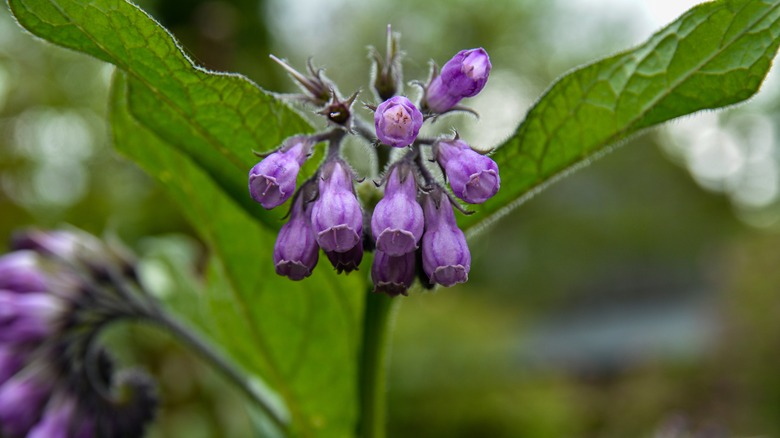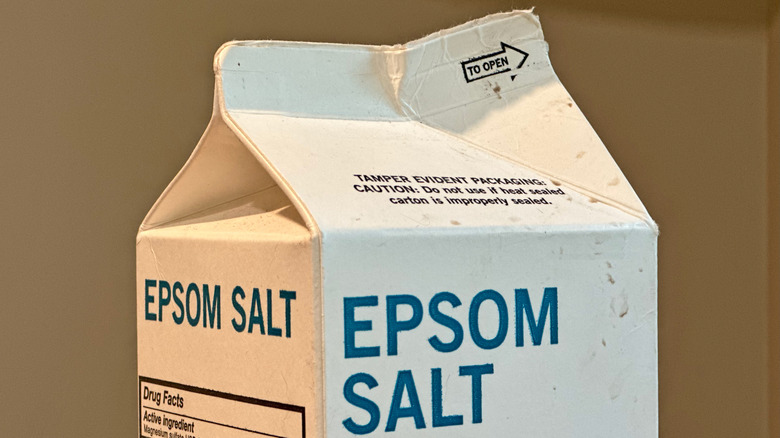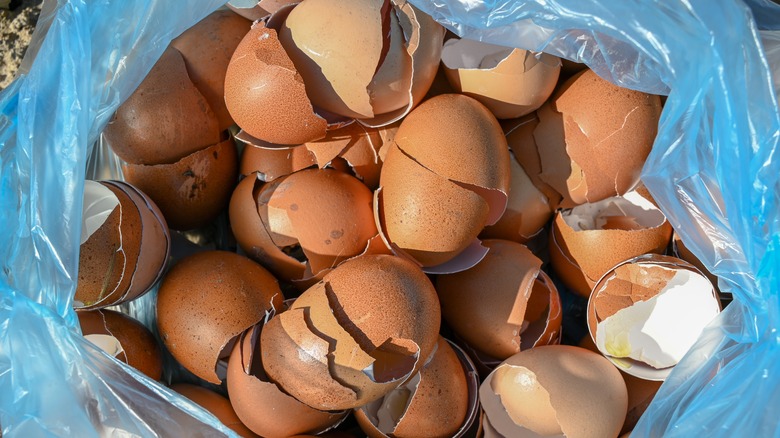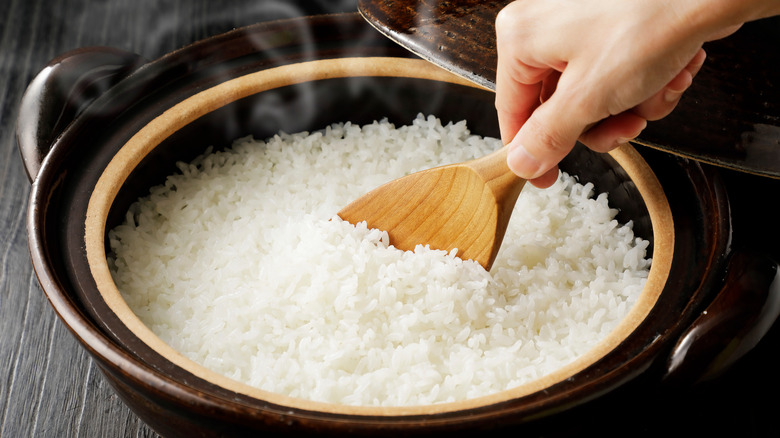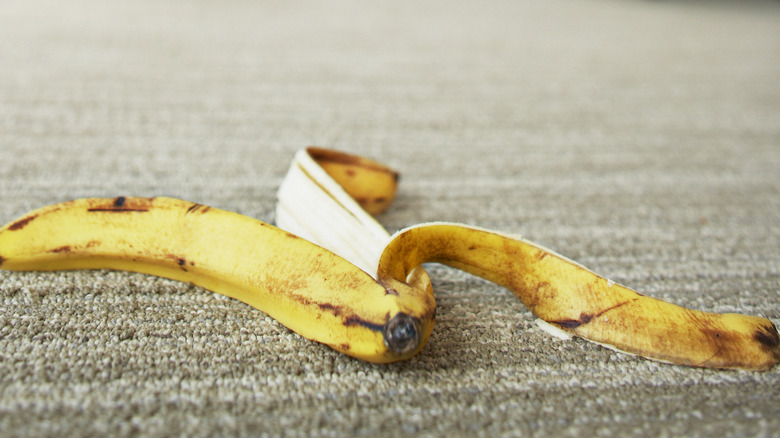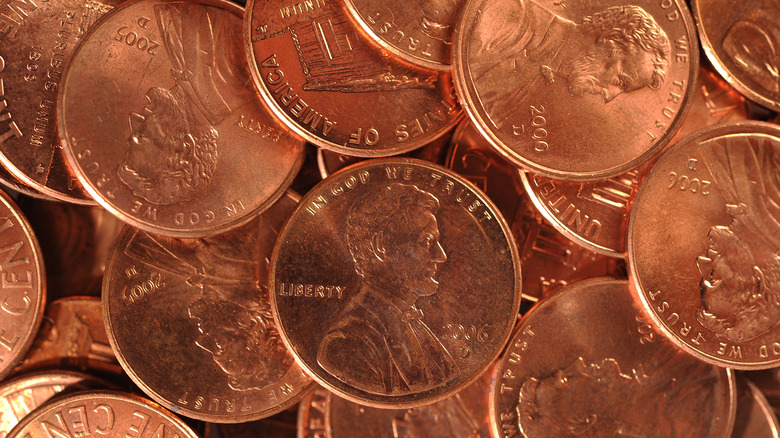Try These Little-Known Lawn Fertilization Hacks And Thank Us Later
Once upon a time, a lush, green, manicured grass lawn was only a concern for public figures and the ultra-wealthy in the United States. In the many decades since, the standard for an average American lawn has transformed from functional food plot to artfully curated grass museum. While there are rumblings of a collective desire to move away from this expectation and back toward a more ecologically friendly way of existing in nature, it will likely take decades to see any large-scale progress take place.
In the meantime, a healthy and well-maintained grass lawn is a requirement to exist peacefully within most American neighborhoods. If a lively lawn is your current goal, you'll need to know how to fertilize your lawn in order to reduce glowingly green results. For some, this means simply purchasing and applying a commercially prepared fertilizer. However, some of these fertilizers have potentially harmful chemicals mixed in that offer additional herbicidal or insecticidal properties. Using a DIY fertilizer hack can allow you to boost your lawn's growth naturally and inexpensively, but it does require you to do some prep. Consider these little-known lawn fertilization hacks before your next trip to the local lawn and garden center.
Make fertilizer out of garden comfrey leaves
Garden comfrey has the unique ability to make your soil healthier and act as an effective DIY fertilizer. Sometimes touted for its controversial medicinal properties, comfrey also boasts a robust nutritional profile. This plant is bursting with phosphorus, potassium, and nitrogen — all essential nutrients for plant growth.
It's important to note that there is a difference between garden comfrey and wild-growing comfrey. The former is much more nutrient-dense, containing nitrogen for grass growth, phosphorus for root growth, and potassium for drought and disease resistance — along with protein, B12, and vitamin C.
Once your comfrey plants are well-established, all you need to do is steep about 1 quart of leaves in a covered 5-gallon bucket of water for two weeks to a month. Once the time is up, strain out the leaves and apply the fermented liquid to your lawn with a sprayer for an effective, super-inexpensive growth boost.
Epsom salt helps balance your soil pH
You may have heard of using Epsom salt for sore throats and achy muscles or even discovered creative ways to use it around the house, but did you know it can also help fertilize your lawn? This affordable medicine cabinet staple contains iron for plant growth and magnesium sulfate for your soil's pH balance. Both iron and magnesium sulfate also boost your lawn's ability to readily absorb other nutrients. Sounds like the perfect naturally occurring mineral-based lawn treatment, right?
While Epsom salt can have major benefits for your grass, there are some potential downsides to consider. Excessive use of Epsom salt — or any form of magnesium — on your lawn can disrupt its nutrient balance, burn the surface of your grass, and create toxic runoff for nearby wildlife. This is especially true for lawns that have adequate magnesium levels before application. Your best bet is to test your soil for specific nutrient deficiencies before deciding which type of fertilizer to apply to your lawn.
If you conclude that Epsom salt is worth trying on your grass, simply dilute the salt with water until fully dissolved and then spray on a ½ pound of Epsom salt for every 100 square feet of lawn.
Pulverize eggshells to enrich your soil
Eggshells are made up of about 94% calcium carbonate, making them an eggcellent natural source of the micronutrient. If eggs are already a part of your diet, then you're already disposing of the shells. You can use them as seed starters, or you can turn them into fertilizer, both of which will cut down on your waste.
Eggshells are good for your lawn because of their calcium content. Calcium serves the important role of protecting plants from diseases and pests. It also stimulates root and stem growth and encourages proper pH and enzyme balance. However, too much calcium in your lawn's soil may prevent your grass from absorbing other key nutrients. Always perform a soil test before adding any particular nutrient to your soil. If you water your lawn with hard water, for example, there may be no need for calcium supplementation.
If you find that your soil does need more calcium, simply wash, dry, and store your leftover eggshells as you use them. Once you've filled your storage container, pulverize the shells and apply them directly to the soil. Till them in with the dirt, though, so you don't have visible eggshell chunks poking out of your lawn. You can also put them in the bottom of freshly dug holes for trees, flowers, or bushes to give your plants nutrient boosts.
Fermented rice water makes a good pesticide
Rice is one of the most basic pantry staples. But the tiny starch also contains many basic nutrients that can help your lawn thrive too. While starch is vital for a healthy bacterial balance within your soil, too much starch can feed harmful bacteria. The answer is fermenting your rice water, which boosts the presence of good bacteria and minimizes that of harmful strains. It doubles as a good natural pesticide, too.
Fermented rice water can provide nitrogen, phosphorus, potassium, magnesium, calcium, sulfur, iron, and a variety of B vitamins to promote root and stem growth, disease and pest protection, boosted cell division, and optimum pH and enzyme balance. All you need to do to cash in on the many benefits fermented rice water can offer to your lawn is save the water each time you boil a batch of rice. Once you have about half as much as you would need to water your lawn, store the rice water — loosely covered — in a dark place. If no dark fungi grow on top of the rice water, you're good to go after one or two weeks. Strain the now-fermented rice water and dilute it liberally with fresh water, then use it to water your lawn.
Don't let ash from your fireplace or firepit go to waste
When you find yourself sitting around a bonfire with your friends and family members, you're probably not thinking about how valuable the accumulating firewood ash could be for your lawn. Ash, however, can be incredibly useful in balancing the pH of acidic soil and also offers a hefty dose of potassium to strengthen grass against bacterial and viral infections, drought, and pests. There's a reason slash-and-burn forestry is a common practice for reinvigorating soil. If a soil test has revealed that your soil is acidic and low in potassium, firewood ash could be perfect for your garden or lawn's soil.
Firewood ash should only be applied to grass with a pH of less than seven. Sandy soils get 10 gallons of ashes per 1,000 square feet, while every other soil type should be treated with 20 gallons of ash for every 1,000 square feet. If you already burn wood, it only makes sense to put your fires' byproducts to good use. Just be sure that you're aware of your soil's attributes before altering its pH and nutrient profile. You can also add ash to your compost pile for use further down the line.
Soak banana peels in water to make fertilizer
If putting kitchen waste to good use is part of your life's mission, you're in luck when it comes to bananas. Much like eggshells, the uneaten portion of the banana has a variety of uses, from a DIY wood polisher to aphid pest control. While the science is currently up in the air regarding using bananas to fertilize plants, there are plenty of lawn and garden hobbyists who claim to have seen success with the method. Lawns that lack potassium are ideal for testing out the theory.
Proponents of fertilizing with banana water advise fermenting banana peels in water in a similar manner as rice to achieve a healthy balance of microbes. If you'd like to try this approach, simply steep chopped banana peels in water in a dark environment for a couple of weeks. Strain out the peels, dilute the banana peel tea with water, and use it to water your lawn. Do keep in mind, however, that bananas are often heavily treated with pesticides and applying banana peel water will potentially involve transferring those pesticides to your lawn. For many, this is a major drawback to using banana peels as fertilizer. But as long as you use organic bananas, you should be in the clear.
Pennies are a good fungicide in a pinch
Believe it or not, some gardeners swear by burying pennies to increase the quality of a lawn or garden's soil. This belief comes down to copper's ability to neutralize fungal spores. If your green spaces have a tendency to suffer from fungal infections, adding copper via pennies to your fertilization routine might not be the worst idea. Only use pennies minted prior to 1983; pennies made after 1983 contain mostly zinc, which can be toxic to plants in large quantities.
If you'd like to try out pennies for your grass, simply bury pennies in your lawn or garden a couple of centimeters below the surface of the soil in the areas you suspect are falling victim to fungal invasion. Because they're good at combating vegetable-destroying blights, this is more a hack for your garden than your lawn. Just know before you bury a penny that it's not a complete fertilizer — it might improve the quality of your soil, but its main function is as a fungicide.

